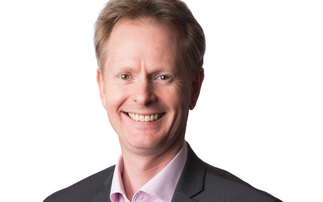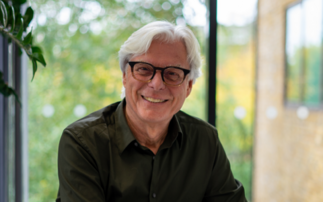
A PP poll earlier this year revealed some 84% of respondents believe the ever-increasing regulatory burden will cause trustees to leave their role prematurely, with one pundit suggesting this was “inevitable”.
A separate poll found around a fifth of respondents erring towards stepping down in the next three years.
One respondent argued the increasing regulatory burden "takes more and more away from the positive of being a trustee", and another noted, while they did not currently have an intention to step down within the next few years, the "increased regulatory burden might dictate otherwise".
Similarly, Charles Stanley research at the start of the year found "burdensome" regulations are an ongoing concern for trustees. The research revealed a massive 73% of defined benefit (DB) trustees surveyed plan to step down from their role within three years.
So, what can be done to prevent trustees departing their roles and leaving a deficit of skills and expertise?
Common themes for departure
Zedra managing director Kim Nash says some of those planning on stepping down may blame "regulatory requirements and complexity of governance" becoming "so onerous that it simply takes too much time to ensure the knowledge and understanding required to make effective decisions for their schemes is maintained".
"The role of the trustee becomes more complex and challenging due to changes in the regulatory and market environment," she says, resulting in "some trustees wishing to step down".
Dalriada Trustees professional trustee Charles Ward says the reason some trustees are considering departing their roles "varies by trustee type" but notes common themes – especially for member-nominated trustees – include "increasing regulation and complexity; lack of ongoing connection with the sponsor, particularly for deferred pensioners; time commitment relative to other roles and/or the inability to take time off the day job".
For company-nominated trustees Ward suggests some are planning on exiting due to "conflict with the company role, lack of time to commit to the role, complexity and regulation, and a lack of connection to the scheme".
Ward notes: "Having said that, there are some schemes, particularly those that remain open to future accrual or where the membership feels a close connection to the scheme, where there is no shortage of volunteers.
"For cases that have moved to a sole trustee model, the decision is usually driven by the sponsor wishing to outsource the governance of the scheme to a professional trustee firm for benefits such as operational efficiency or value for money."
Ward adds: "Given this myriad of factors and the fact the vast majority of schemes are legacy liabilities for the sponsor, it is difficult to see what could be done to attract a new cohort of, usually, lay trustees to DB pension schemes."
A different problem exists in defined contribution (DC), he explains, where The Pensions Regulator (TPR) is "pushing smaller schemes towards consolidation, usually through a master trust", which he suggests will "severely limit the opportunities to become a trustee of a DC scheme in future as the numbers dwindle over time".
Change in dynamics
Despite some trustees admitting their intentions to step down in the coming years, industry research previously found more than half of schemes now have a professional trustee and some 20% have a sole trustee arrangement in place.
The market for professional trustees has grown rapidly over the past years, but it has also consolidated.
Indeed, in early 2023 there were two mergers supported by private equity investment - with Independent Trustee Services and Ross Trustees coming together to form Independent Governance Group and 2020 Trustees and Punter Southall Governance Services combining to become Vidett in addition to a number of firms making smaller acquisitions.
Isio's 2024 Professional Independent Trustee Survey – published in April – showed the professional trustee market is continually expanding, with firms showing 16% revenue growth last year – the fourth consecutive year firms have seen double digit growth, with the largest ten professional trustee firms now responsible for £1.1trn in pension scheme assets.
As such, TPR suggested there is an evident change in dynamics among the trustee sector.
A spokesperson for the regulator told PP: "As the market shifts towards fewer, larger schemes, we are seeing a change in the dynamics of trusteeship with many schemes looking at new models including professional or sole trusteeship.
"Trustees are the first line of defence for pension scheme members and is important that they have the right balance of expertise and member voice."
Nash notes that "pleasingly, what we are seeing is actually more people looking at the transition into professional trusteeship as an active career choice rather than a phase into retirement which historically was the common path".
She adds: "Having a professional trustee on a scheme alongside strong secretarial support can ease the burden on a trustee board as they ensure compliance is maintained for the schemes and prioritise the actions that need to be discussed and decisions made."
Association of Member-Nominated Trustees (AMNT) co-chair Maggie Rodger suggests the concentration of professional trustee firms "is concerning because it means there are fewer diverse voices".
However, she says the one mitigation is that "there are now some younger professional trustees who do bring some diversity, although they still belong to the ‘pensions industry', so still not quite the same as trustee challenge from a wider lived experience".
Association of Professional Pension Trustees (APPT) chair and Capital Cranfield managing director Harus Rai says while research has alluded to the fact many trustees are planning to leave their roles, he is in fact seeing the opposite among those wishing to become professional trustees.
He says: "I am seeing between 60 and 80 candidates each year who are interested in becoming a professional trustee.
"There will invariably be individuals who are looking to retire which is only natural but, beyond the norm, we are not seeing a trend of professional trustees looking to leave the profession."
However, he suggests it is "fair to say that it is becoming increasingly more difficult to find individuals who are prepared to be both member-nominated and employer-nominated trustees and this is just one reason why we have seen such a rise in professional corporate sole trusteeship".
Isio's survey also showed major growth in the sole trustee market, with 46% of all new appointments in 2023 being sole trustees.
Nash says: "We have seen an increase in the popularity of the sole trustee model as it becomes more challenging to find lay trustees due to increases in regulatory requirements and as the membership ages.
"The nimbleness and efficiencies that can be harnessed through a professional sole trustee appointment make this approach particularly attractive for projects such as securing a pension scheme buy-in, where there is a need to act quickly, engaging frequently with advisers and third parties."
Ward suggests there is an "increasing disconnection between schemes and their sponsors, as a result of the vast majority being closed to future accrual", which means "there will inevitably be more demand for sole trusteeship in the future".
"We would contend that a sole trustee appointment is the most efficient and proactive model for completing a transaction on competitive terms. This operating model can also drive the ultimate buyout and wind up of the trust to deliver best outcomes in a cost-efficient manner," he adds.
Nash notes: "We believe that lay trustees bring different perspectives to the table and therefore where there is demand, in our schemes we have established member forums alongside a sole trustee to still receive input and challenge from membership without the fiduciary duty of acting as a trustee.
"This has proved really popular with many schemes and can often add a valuable perspective to sole trustee structure."
Rai reveals for several years now, "we have seen that it has been more and more difficult to find individuals who would be prepared to act as a lay trustee".
"Much of this is due to the time commitment placed on them in an ever increasing pensions governance environment but also due to the maturity of pension arrangements where members may have left a firm's employment many years ago.
"Whilst sole trusteeship is right for many schemes it is not correct to say it is right for every scheme. As such, it is important that we do more to encourage individuals to want to put themselves forward as a lay trustee."
Trustee register – hit or miss?
Earlier this year, the then pensions minister Paul Maynard said while the pensions sector will "probably need to move towards" a mandatory trustee register – a suggestion mooted in the chancellor's Mansion House speech – "no decision" had yet been made.
A DWP spokesperson told PP: "The DWP will support TPR to develop and take forward a register of trustees, which will enable targeting of those trustees and schemes who require additional support to fulfil their obligations."
On the potential of a mandatory trustee register, Nash says: "We support the professionalisation of trusteeship and ensuring member benefits are protected.
"The key element will be how TPR ensures those on the register meet and maintain required competency standards. This process needs to add value to how schemes are governed and be balanced against other competing TPR priorities."
TPR told PP it will "increasingly be challenging schemes to make sure that savers' interests are always met".
Ward also favours a register, "along with stronger regulation of professional trustees, including potential performance monitoring metrics".
As does Rodger, who says: "It is important that TPR can check up on basic mandated training requirements. For MNTs it can also open up a direct line of information from the regulator to keep them up to date. And it emphasises the responsibility of the role they have assumed - and where the help can come from." She adds: "It will also be important if the number of professional trustees shrink so that trustees who are overstretched can be identified."
Rai argues it is "only right that the regulatory bodies have a full record of who the individuals are who are responsible for making decisions on those schemes" since the sector now consists of "tens of thousands of trustees who are responsible for over £1trn of pension assets".
As a result of the scale if consolidation seen in the market in recent years, some could argue groupthink may become an issue.
Rodger argued the concentration of professional trustee firms is "concerning", largely because it means there are "fewer diverse voices".
However, she says the one mitigation is that "there are now some younger professional trustees who do bring some diversity, although they still belong to the ‘pensions industry'".
Rai believes otherwise, not feeling the risk of groupthink is cause for concern. He says: "The largest firms all have different operating models and trustees with very different skill sets and approaches.
"We, and most of our competitors, mitigate this by quite deliberately bringing in trustees from a range of complementary backgrounds, not just the pensions mainstream, to match differing client needs and encourage internal debate from varying perspectives."
The forthcoming year is only set for more consolidation, more assets, and change among the pensions landscape, as ever.
But, as Ward concludes, in all cases, "our bottom line is to protect beneficiaries and to work collaboratively with sponsors to achieve this in the most efficient way".








